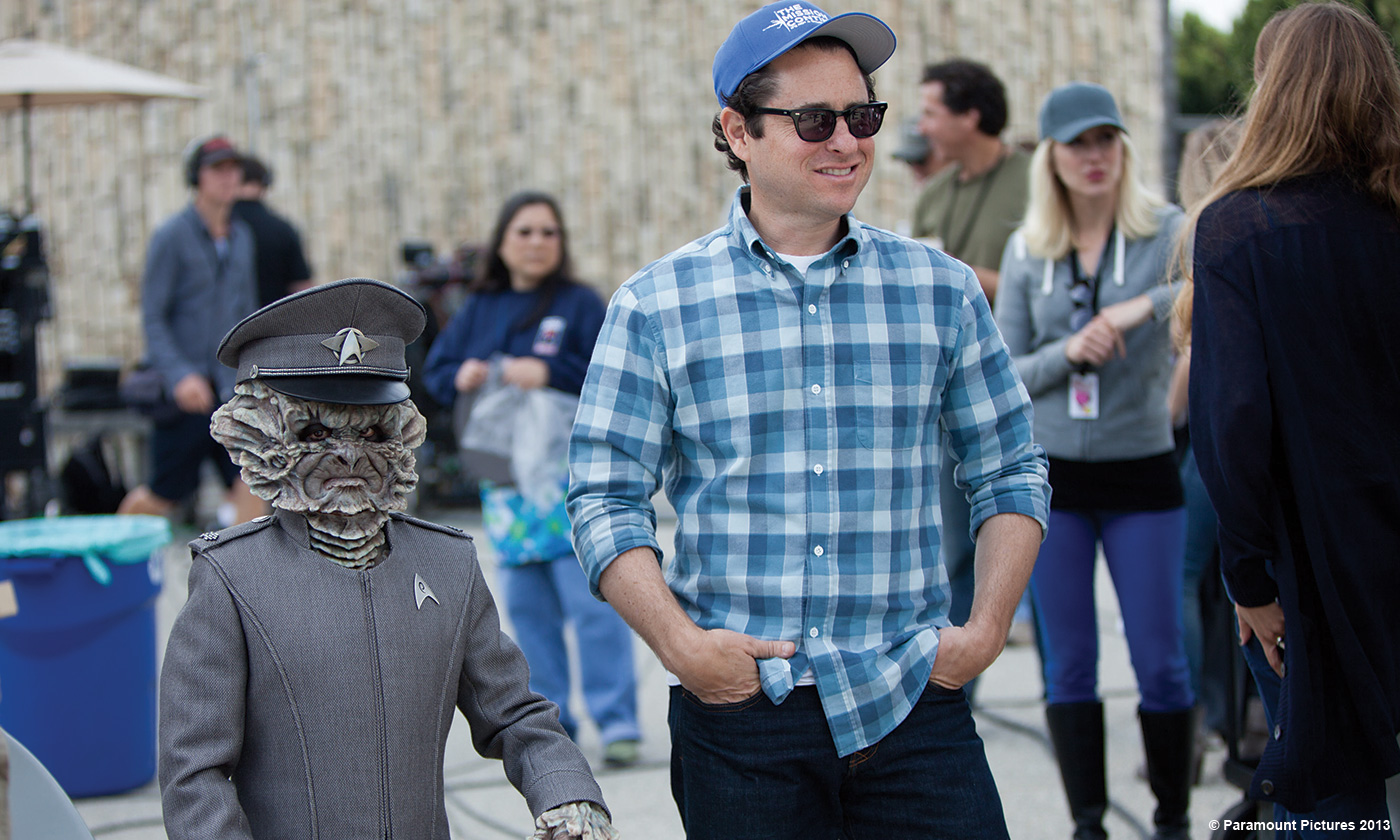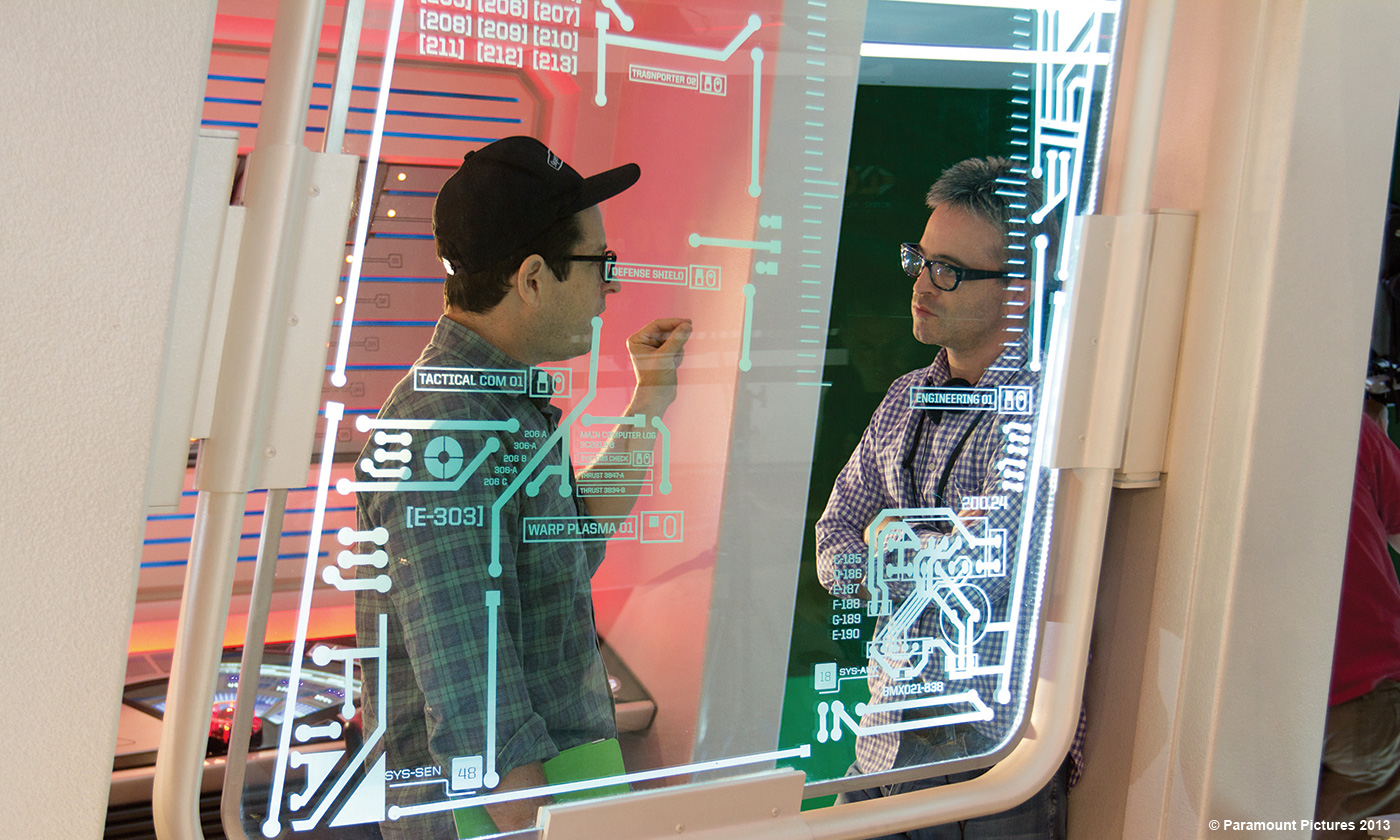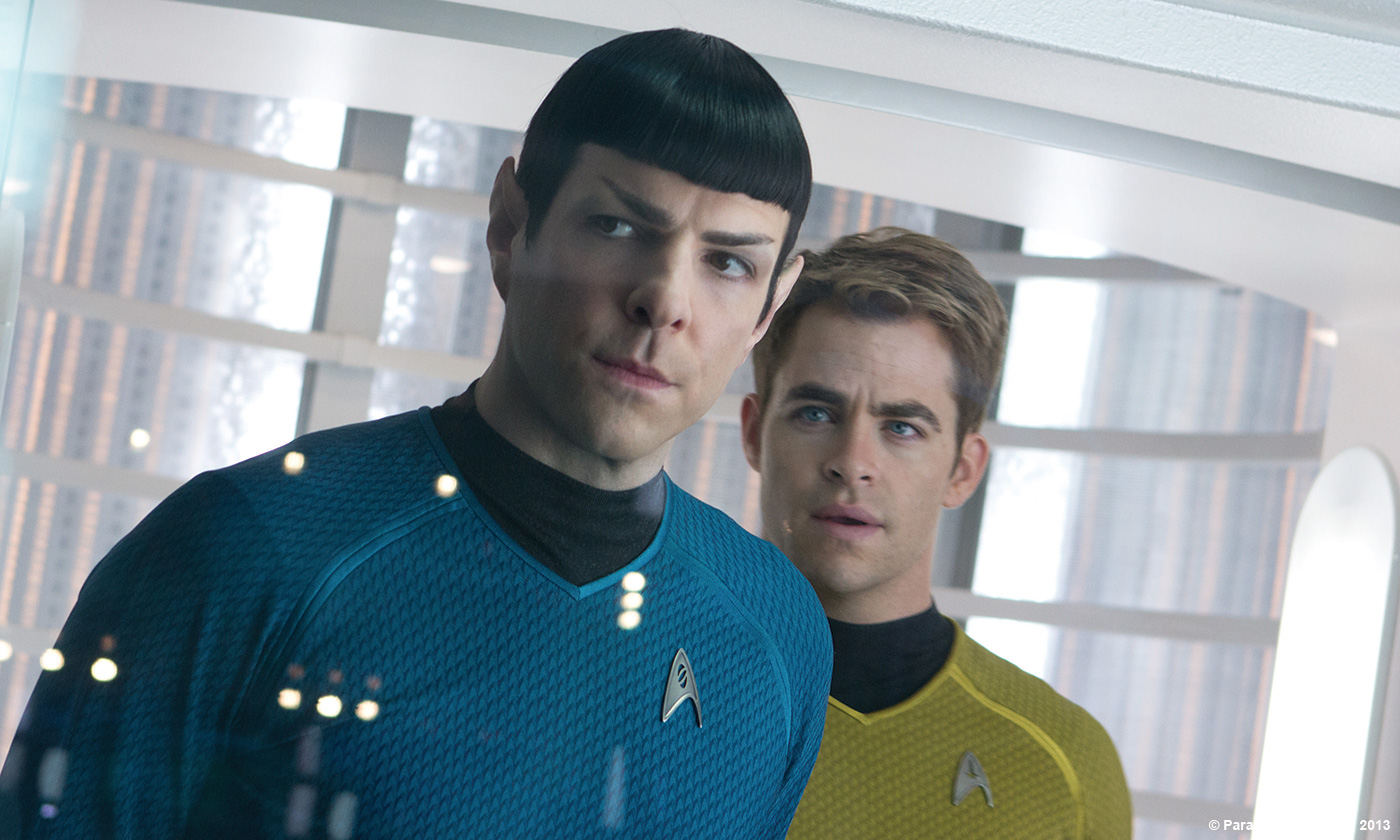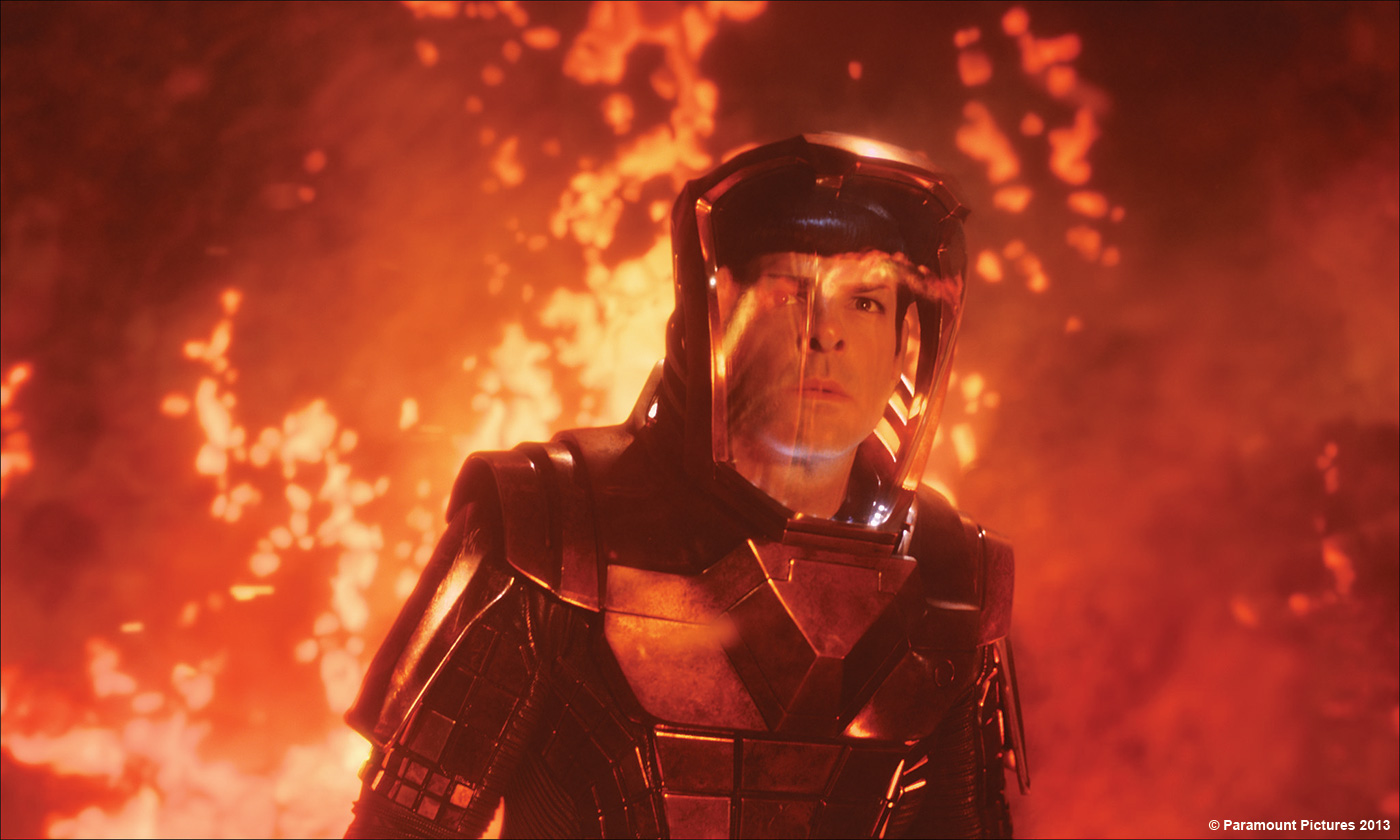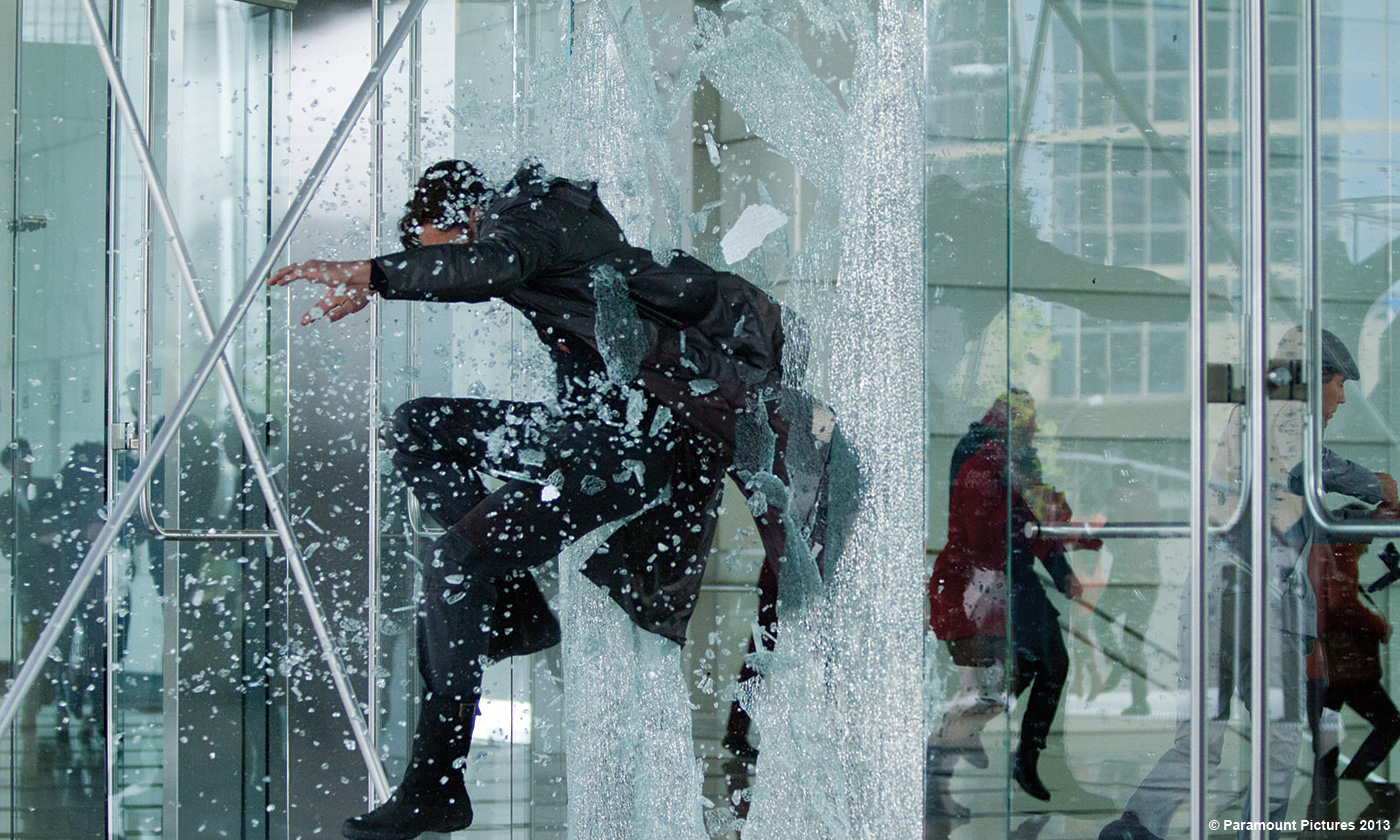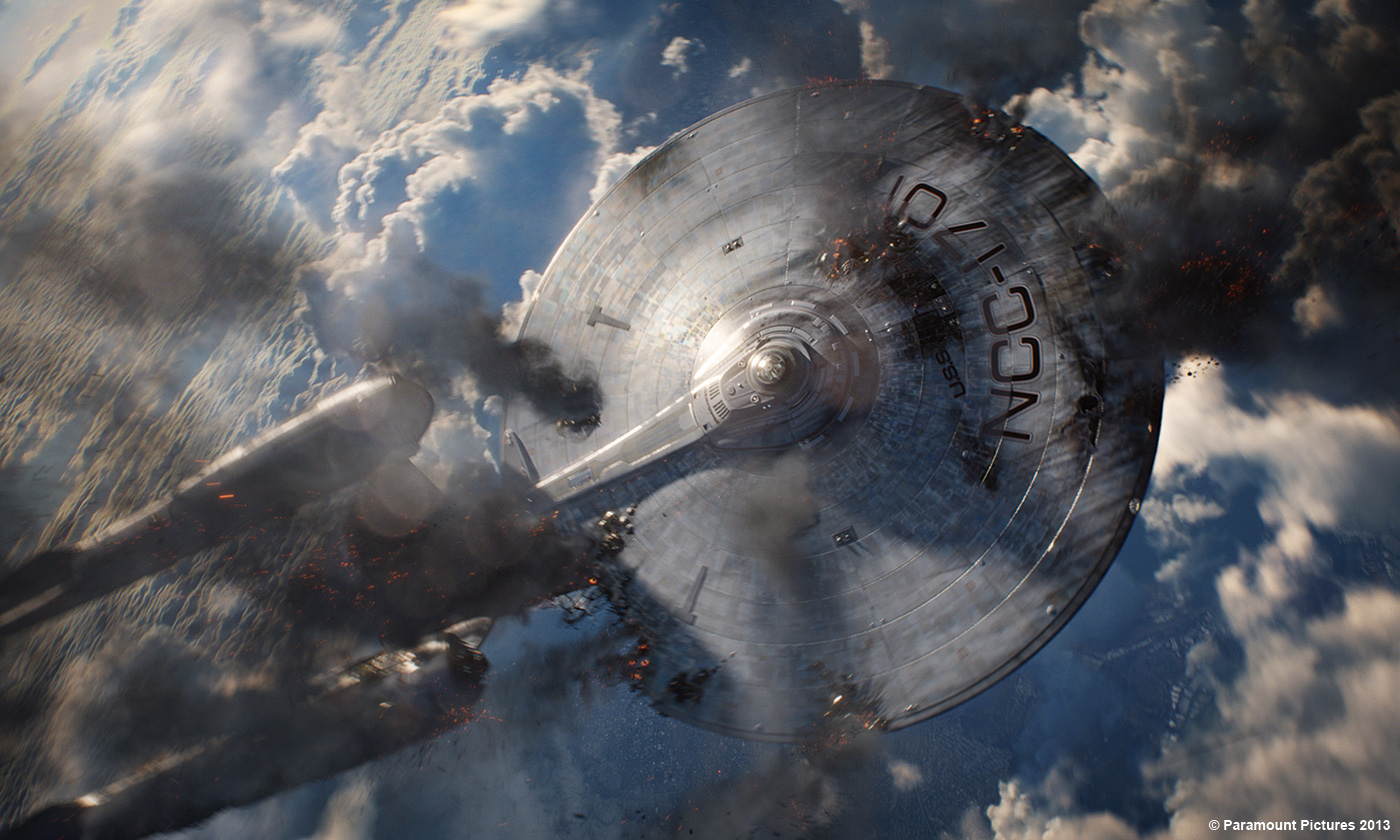During his last visit, Roger Guyett explained to us the work of ILM on COWBOYS & ALIENS. In 2013, he is back with director J.J. Abrams on STAR TREK INTO DARKNESS. In addition to its Overall VFX Supervisor job position, he is the second unit director as he was on the previous STAR TREK movie.
What was your feeling to be back with director J.J. Abrams in the Star Trek universe?
It was very exciting! I’d had a great time working on the previous movie and I was very proud of what we’d achieved.
He’d put together a great crew and cast – all of whom were a joy to work with – so it was a great reunion and everyone was thrilled to see where we could take this next movie.
How was your collaboration with J.J. Abrams?
We’ve developed a great working relationship – and friendship – I have enormous respect for him.
He’s a very talented man, and brings a tremendous creativity and energy to everything he does, but he also lets people contribute and respects their opinions. I really enjoy working with him, he’s a great collaborator.
What was your approach on this new movie?
I wanted to develop some of the ideas that we’d started in the last movie, and let the audience see more of the Trek world. This movie takes you deeper into the that world… and theres lots for the fans, without it getting to be too much of a geek-fest. It had to entertain a wide variety of audiences, not just the core fans although we wanted to put elements in it for them as well. Design is an important aspect of any movie set in a future world and that aspect of the Trek movies really interests me.
However, the most important thing was to bring the same freshness and excitement that I felt we’d captured in the previous movie. We worked to retain that same surprise and excitement in the sequences.
You were also second unit director. Can you tell us more about this position?
On a big movie like Trek, there’s 2 units that shoot the movie: the first unit, directed by JJ, which concentrates on the acting side of the movie, with JJ working with all the principal actors to ensure he has the right performances, and then a smaller 2nd Unit, which in this case was directed by me, which mainly deals with the action scenes, and a lot of supporting shots that may not include the principal actors.
There’s a lot of cross-over in the sequences we’re shooting but my main aim is to ensure his vision is correctly captured. We talk a lot and often he’ll review what I’ve done to make sure we’re getting what he needs to make the movie. Fortunately we’ve now worked on 3 movies together, so we definitely have a short hand and he’s extremely supportive.
What are the benefits of this position on the visual effects side?
A lot of the scenes that I concentrate on as 2nd Unit director, are the big action moments, which are also the big VFX scenes, so I feel I can bring that understanding and knowledge to bear as I shoot the scenes.
What was a typical day for you on-set and then during the post?
They’re very different but both tremendous fun!
On set the day starts by talking to the Assistant Director Tommy Gormley, who organizes the shoot, and trying to understand what the unit is hoping to achieve that day. There’s a lot of departments working together on a film set, and making sure everyone is on the same page has a lot to do with the success of the day and ultimately the VFX work…. And of course, spending time talking to JJ and seeing how each shot comes together is very much the key. As a VFX supervisor you’re responsible for the success of that work – so when JJ is doing the VFX based work I stick close and make sure he understands what the expectations are.
You’re also constantly reviewing the schedule to try maintain a plan on what is coming up – so that the various departments know what to expect and everyone is prepared.
In post, I spend as much time as I can with each of the companies working on the show so that I can review the work and develop the sequences. You’re constantly trying to think in the broader sense of the movie and not just the success of the individual shots – each shot tells a little story of its own. With a director like JJ its all about story and not just the spectacle of the shots.
As Production VFX Supervisor, you have split the work between ILM and other studios. Can you tell us more about it?
ILM were the biggest company working on Trek, with Pat Tubach as a co-supe and Paul Kavanagh as Anim supe, then Pixomondo, with Ben Grossman supe’ing that company.
We also had Kelvin Optical and Atomic Fiction (with Kevin Baillie Supe’ing). Ron Ames was the VFX producer for the overall show with Luke O’Byrne producing on the ILM side. The VFX production is crucial in making the show run smoothly.
I might spend time at any one of those companies, but I also spent a couple of days a week at editorial making sure that we were planning the sequences correctly, and working on the edits as our work developed. Theres also regular reviews with JJ, that allow him to give feedback and see how the VFX work is developing.
How did you work with director J.J. Abrams and the previs team to bring life to the action sequences?
Each sequence we previs starts with a general download from JJ about what he expects to happen in the sequence, and often some shot ideas to get the process going. Brad Alexander is his Previs supervisor and he does an excellent job of organizing the work and getting a team together. Once we’ve got the first very rough version JJ starts to get very specific about the shot ideas and more detail…. it’s an iterative process. If there’s a set or location involved then we’ll try to make sure that that is represented in the previz. We previs as many sequences as we can before the shoot, and often during the shoot the team will still be working. Obviously you develop the previs based on the shoot schedule – so that you’ve designed those sequences before you shoot them! It’s a great planning tool and allows everyone to understand the expectations of the sequence.
JJ really enjoys the shot design aspect and you can tell from his movies how specific he can be about the movement of the camera.
The J.J. Abrams directing style is handheld and moving shots. How did you manage the tracking challenge?
With modern tracking software, it’s less of a problem – we also scan the sets so that the matchmovers have good reference material to work with and place in the scenes to get the best match possible.
The On-set matchmove team work tirelessly to try to ensure that the post process is as easy as possible. JJ loves anamorphic lenses and these are definitely not the easiest to match.
At a moment, Spock is on a lava mayhem. How did you created the lava and the FX for this sequence?
Dan Pearson and his team at ILM did an incredible job with the lava – and all its supporting elements like fire, smoke, embers etc… He’s a genius and he was able to bring all sorts of real world physics to the simulations – the lava creating crust as it cools and changing color with temperature. He also made sure there were enough levels of controls within the sim so that TDs could really get the lava to perform at different levels of craziness – which really amped up the mayhem and character of the volcano!
Here is a clip of the lava sequence.
Can you also explain to us more about the water simulation when the Enterprise is going out of the ocean?
ILM’s Lee Uren did the water simulation for that shot. It took a lot of work from many people with Todd Vaziri putting the final comp together. We’ve invested a lot of RnD effort into ILM’s water tools to try and make it as simple as possible but its still an enormous amount of work!
Can you tell us in details about the Enterprise and Vengeance ships creation?
The initial designs came from Scott Chambliss’s production design group. I think James Clyne was a lead concept artist in creating the look of the Vengeance, with Ryan Church being a prominent designer of the Enterprise. The Enterprise developed over a considerable period so there were a lot of versions and ideas that came from different places including ILM art director and concept artist Alex Jaeger – as well as the model building team. A tremendous design effort went into both – we really wanted to get them right!
JJ had been very intrigued with the idea of a black ship – even on the first movie.
This new episode feature an impressive amount of environments. How did you manage so many locations?
That’s part of the style of the movie – the energy of seeing the crew in different environments and sets. We did a lot of set extension work – and space environments of course. Barry Williams was the Environment lead at ILM and he did a tremendous job.
What were the real size of these sets?
Some of them were tiny – but its a testament to the skill of all the VFX artists that its hard to tell where a lot of the seams are ! The concept of set-extension is a very accepted part of modern film making and can be extremely efficient…. and its still very exciting, even for me, to see a small set suddenly expand (and the scale of the movie too) when that set extension starts coming into play. The red forest at the start of the movie was pretty small, and it was very awesome to see the world open up when Barry Williams (and his team) added the extended the forest jungle and the volcano – it was fantastic!
However, JJ and I always like to get as much “real” as we can into any shot – its better for the actors and of course the lighting – so we try and have as much real set in the immediate vicinity of the actors as possible.
Can you tell us more about the creation of these various environments and especially the futuristic version of London and San Francisco?
It was so much fun designing these future cities. Scott Chambliss and his team laid the groundwork but we had a ton of stuff to do in post – probably more than we expected – so we ended up building a complete San Francisco and a large part of future London.
As ILM’s VFX Art Director on the show, Yanick Dusseault’s contribution was huge in creating those cities. JJ also finds it fascinating and he always contributes design ideas to the process.
There are many massive destructions. Can you tell us in details about this aspect?
Yes, there are. Each one of them was a lot of work! We had great teams at all the facilities. Karin Cooper led the ILM destruction team – she spent a lot of time cracking and destroying San Francisco. Underneath all of it the shot design is the most crucial aspect – you have to get that right before you start doing really lengthy and expensive sims.
This clip shows many shots of destruction.
Have you enhanced your in-house software Plume for this show?
We’ve done so much with Plume at ILM – its an amazing tool – the smoke and explosion stuff we did is so much more complex than what we’ve previously been able to achieve.
What was the biggest challenge on this project and how did you achieve it?
There were a lot of challenges – but that makes it interesting. Theres a lot of technical aspects to the show but I also love the challenge of the sequence and shot design. Trying to get those sequences right is the key.
Was there a shot or a sequence that prevented you from sleep?
Ha! Probably but I generally sleep pretty well! Conceptually, the lava freezing towards the beginning of the movie had me thinking the hardest. It was a challenge because it’s easy to say “hey, the lava freezes” but you need to turn that into a real shot – not so easy – especially with the time constraints we had. We had to jump in and start trying to realize some of the ideas we were talking about… you’re starting from nothing too, so it takes a while to create something that anyone can meaningfully respond to.
What do you keep from this experience?
I’m very proud of the work and what we were able to achieve, and of course, to see it on the big screen is very satisfying. We had a really awesome and talented crew and it was a real pleasure coming to work everyday and seeing the work come to life.
You work with so many people – the relationships you develop over the show are what you really walk away with – there’s just so many talented people working in this business. You learn so much – it’s very satisfying.
How long have you worked on this film?
About 2 years.
How many shots have you done?
We did around 1800.
What was the size of your team?
It’s hundreds of people – with the biggest teams at both ILM and Pixo. Its such a global industry, we had offices all over the world working on the show – including a large crew (led by Patric Roos) at ILM’s Singapore office.
What is your next project?
It hasn’t been announced yet.
A big thanks for your time.
// WANT TO KNOW MORE?
– ILM: Official website of ILM.
© Vincent Frei – The Art of VFX – 2013


